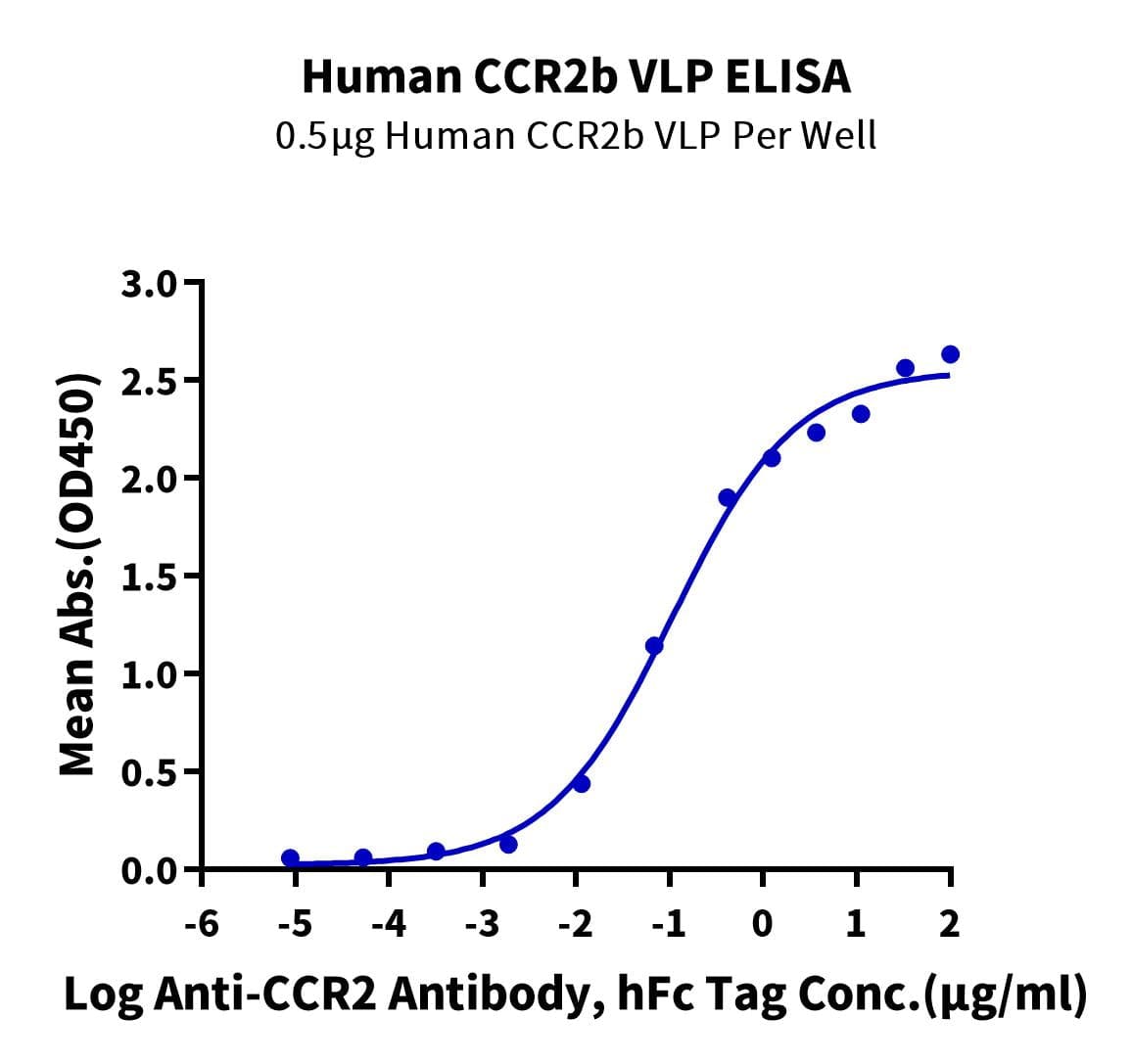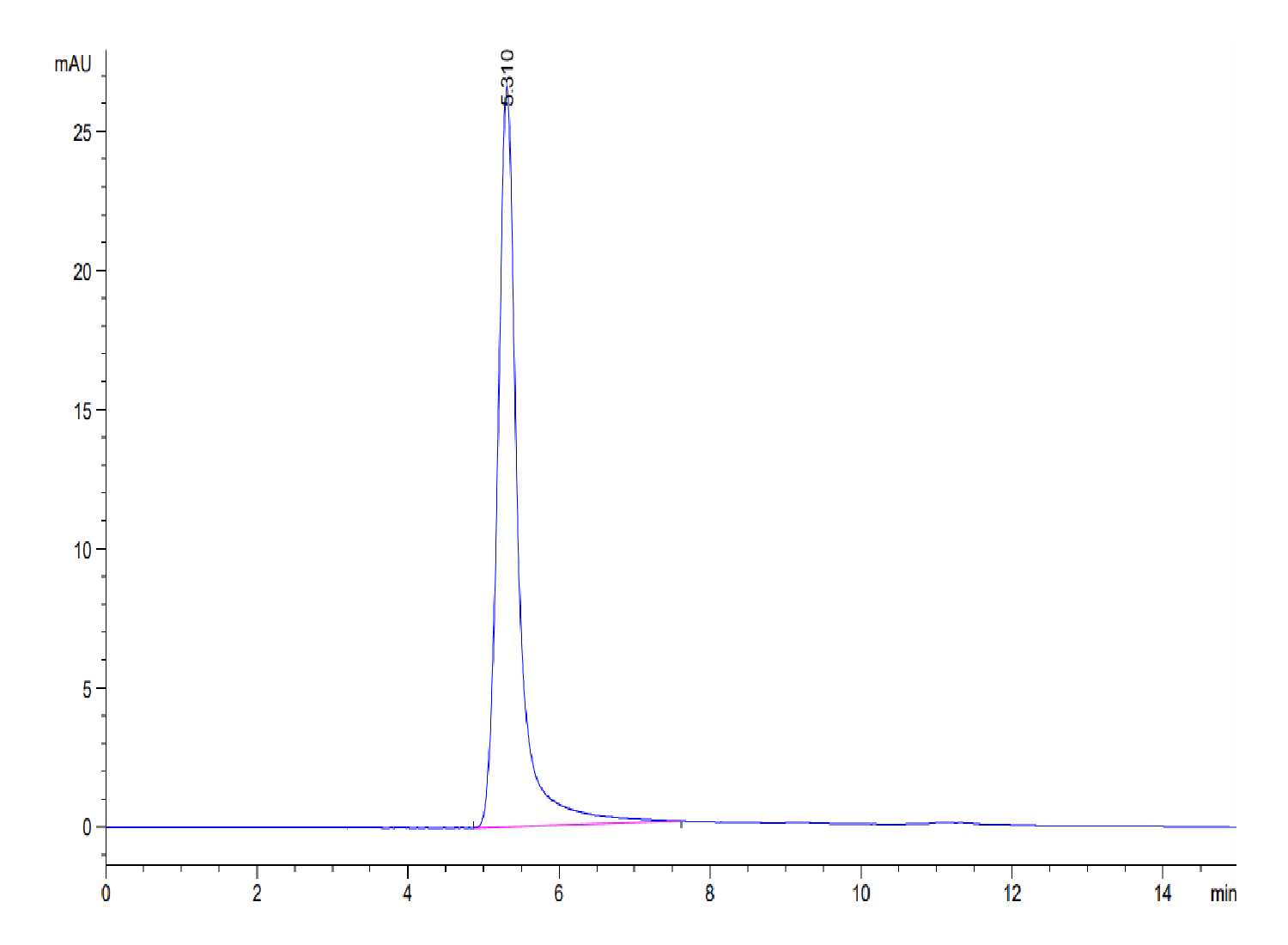| Weight | 1 lbs |
|---|---|
| Dimensions | 9 × 5 × 2 in |
| accession | P41597 |
| express system | HEK293 |
| product tag | |
| purity | > 95% as determined by HPLC |
| background | The chemokine (C-C motif) receptor 2B (CCR2B) is one of the two isoforms of the receptor for monocyte chemoattractant protein-1 (CCL2), the major chemoattractant for monocytes, involved in an array of chronic inflammatory diseases. The actin-binding protein filamin A (FLNa) as a protein that associates with the carboxyl-terminal tail of CCR2B. FLNa emerges as an important protein for controlling the internalization and spatial localization of the CCR2B receptor in different dynamic membrane structures. |
| molecular weight | The target protein has a predicted MW of 42.9kDa. |
| available size | 100 µg, 500 µg |
| endotoxin | Less than 1EU per μg by the LAL method. |
Human CCR2b Protein-VLP 3852
$1,100.00 – $3,800.00
Summary
- Expression: HEK293
- Functional: Yes (ELISA)
- Amino Acid Range: Met1-Leu360
Human CCR2b Protein-VLP 3852
| protein |
|---|
| Size and concentration 100, 500µg and liquid |
| Form Liquid |
| Storage Instructions Valid for 12 months from date of receipt when stored at -80°C. Recommend to aliquot the protein into smaller quantities for optimal storage. Please minimize freeze-thaw cycles. |
| Storage buffer Shipped with dry ice. |
| Purity > 95% as determined by Tris-Bis PAGE |
| target relevance |
|---|
| The chemokine (C-C motif) receptor 2B (CCR2B) is one of the two isoforms of the receptor for monocyte chemoattractant protein-1 (CCL2), the major chemoattractant for monocytes, involved in an array of chronic inflammatory diseases. The actin-binding protein filamin A (FLNa) as a protein that associates with the carboxyl-terminal tail of CCR2B. FLNa emerges as an important protein for controlling the internalization and spatial localization of the CCR2B receptor in different dynamic membrane structures. |
| Protein names C-C chemokine receptor type 2 (C-C CKR-2) (CC-CKR-2) (CCR-2) (CCR2) (Monocyte chemoattractant protein 1 receptor) (MCP-1-R) (CD antigen CD192) |
| Gene names CCR2,CCR2 CMKBR2 |
| Protein family G-protein coupled receptor 1 family |
| Mass 9606Da |
| Function Key functional receptor for CCL2 but can also bind CCL7 and CCL12 (PubMed:23408426, PubMed:8048929, PubMed:8146186). Its binding with CCL2 on monocytes and macrophages mediates chemotaxis and migration induction through the activation of the PI3K cascade, the small G protein Rac and lamellipodium protrusion (Probable). Also acts as a receptor for the beta-defensin DEFB106A/DEFB106B (PubMed:23938203). Regulates the expression of T-cell inflammatory cytokines and T-cell differentiation, promoting the differentiation of T-cells into T-helper 17 cells (Th17) during inflammation (By similarity). Facilitates the export of mature thymocytes by enhancing directional movement of thymocytes to sphingosine-1-phosphate stimulation and up-regulation of S1P1R expression; signals through the JAK-STAT pathway to regulate FOXO1 activity leading to an increased expression of S1P1R (By similarity). Plays an important role in mediating peripheral nerve injury-induced neuropathic pain (By similarity). Increases NMDA-mediated synaptic transmission in both dopamine D1 and D2 receptor-containing neurons, which may be caused by MAPK/ERK-dependent phosphorylation of GRIN2B/NMDAR2B (By similarity). Mediates the recruitment of macrophages and monocytes to the injury site following brain injury (By similarity).; (Microbial infection) Alternative coreceptor with CD4 for HIV-1 infection. |
| Catalytic activity #N/A |
| Subellular location Cell membrane ; Multi-pass membrane protein. Note=The chemoattractant receptors are distributed throughout the cell surface; after stimulation with a ligand, such as CCL2, they are rapidly recruited into microdomain clusters at the cell membrane. |
| Tissues Expressed by monocytes and IL2-activated NK cells. |
| Structure Interacts with ARRB1 (PubMed:9501202). Interacts (via extracellular N-terminal region) with beta-defensin DEFB106A/DEFB106B; this interaction may preferentially require specific tyrosine sulfation on CCR2 (PubMed:23938203). Interacts with NUP85; the interaction is required for CCR2 clusters formation on the cell membrane and CCR2 signaling (PubMed:15995708, PubMed:25283965).; (Microbial infection) Binds to HIV-1 Tat. |
| Post-translational modification N-glycosylated.; Sulfation increases the affinity for both monomeric and dimeric CCL2 with stronger binding to the monomeric form (PubMed:11046064, PubMed:23408426). Binding of sulfated CCR2 to CCL2 promotes conversion of CCL2 from dimer to monomer (PubMed:11046064, PubMed:23408426). |
| Target Relevance information above includes information from UniProt accession: P41597 |
| The UniProt Consortium |
Data
Publications
Publications
| pmid | title | authors | citation |
|---|---|---|---|
| We haven't added any publications to our database yet. | |||
Protocols
| relevant to this product |
|---|
Documents
| # | ||
|---|---|---|
| Please enter your product and batch number here to retrieve product datasheet, SDS, and QC information. | ||
















